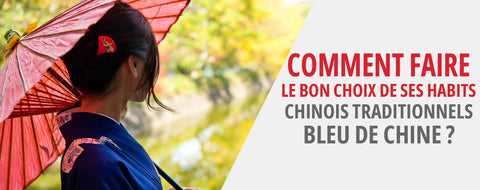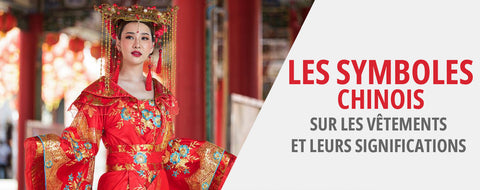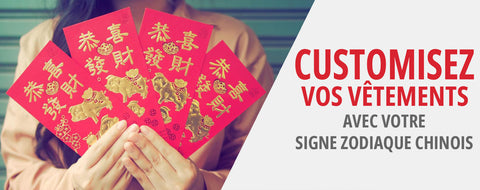
10 Chinese Flowers and their Symbolism
reading - words
China has one of the oldest and most interesting ancient cultures in the world. This culture, which extends across much of East Asia, is also extremely diverse, with great cultural differences between cities, villages and provinces. At the heart of this culture, flowers have always had a place of honour. They play a major role in daily life. But it is in art and poetry that flowers have been most present. Just like Westerners, the Chinese like to think that flowers convey positive messages and so they are recurrent in literature, food, drink and decorations.
In this article we will see the 10 Chinese flowers most characteristic of Chinese culture and the positive messages they transmit.
1) Chrysanthemum

Chrysanthemums are associated with the famous Chinese poet Tao Yuanming. In one of his works, he refers to the chrysanthemum as a symbol of humility. He wrote: "As I picked chrysanthemums under the eastern fence, my gaze rested quietly on the mountains to the south.". It is one of the most famous Chinese poems, which reflects a peaceful and happy life, the dream of every ordinary man.
In Chinese culture, chrysanthemum also symbolizes longevity. According to Chinese medicine, chrysanthemum tea is an excellent remedy for treating fever or an upset stomach. The Chinese therefore like to drink this dear tea after eating spicy or cheesy foods, for example. In China, people also use dried chrysanthemum petals to make their pillows.
2) Chinese Rose

Bearing a strong resemblance to other roses, but with larger petals and fewer thorns, this plant is native exclusively to the subtropical and temperate northern latitudes of China, hence the name "Chinese rose". History says that rose cultivation began in China at least 5,000 years ago and later spread elsewhere in the world.
One of the greatest Chinese poets and essayists, Su Shi, of the Sung period (960-1279), described the flower in his poem: "The most beautiful peonies appear only in early summer and late spring, while Chinese roses bloom in infinite beauty during all four seasons. Whether it blooms or fades, the flower never cares about the arrival of spring. ”
The buds and flowers of the Chinese Rose are brewed into tea or soup, and are also used as a cooking herb. People eat the thin fleshy part surrounding the seeds raw or after cooking. Rose seeds are also a good source of vitamin E and are ground for use in foods. In China, these flowers are used extensively in the perfume and cosmetics industry.
3) Peony

The peony is characterized by bright colors, large size, and multiple petals. Many consider the peony to be the national flower of the country although it is not officially declared as such.
It was the great Chinese poet Li Bai who compared the beauty of his mistress Yang Yuhuan to peonies. He wrote: "The floating clouds remind me of her clothes, and the peonies of her face.". In most New Year images, fairy children always hold peonies. Peonies carry people's wishes for a rich and promising new year. Blooming from May to June, peonies' bright colors and large, fluffy petals symbolize wealth, good fortune, and honor in traditional Chinese culture.
4) Lotus

The lotus, in ancient Chinese culture, was the symbol of a woman's nobility and purity. The lotus flower, with its leaves, seeds and roots, has been widely used in Chinese medicine and cuisine for over 1,000 years. In Hubei Province, the specialty is the use of lotus roots as the main ingredient in soups.
The lotus is a precious flower in Buddhism, which is one of the most present religions in China. The lotus, despite growing in muddy waters, blooms beautiful petals of immaculate white. This is why it symbolizes the purity of an enlightened mind that can arise even in the midst of the sufferings of samsara (world). The lotus blooms on lunar April 8 in Beijing, which is the Buddha's birthday, and on lunar January 8, which is Lotus Day.
5) Plum Blossom

Mao Zedong, China's most influential revolutionary who named the country the People's Republic of China, wrote a poem called "Ode to the Plum Blossom." He described the flowers as: "Fair and beautiful. She does not need spring for her own sake, but only to announce the arrival of the season. When all the flowers bloom in abundance, she smiles among them".
Plum blossoms were metaphors to honor the great martyrs. This famous Chinese flower symbolizes purity, perseverance, promise, and perpetual beauty. This flower is also a strong symbol of success. In Chinese culture, plum blossom along with bamboo, chrysanthemum, and orchid, are called the "four gentlemen". People also call it "the friend of winter", it represents the meaning of endurance.
6) Camellia

It was between 220 and 280 AD that camellia flowers were planted in China. "Ode to Camellia" is an old poem written by Madame Huarui. And this poem describes the camellia as: "Blooming on the hills, like the glow of a burning sunset and the floating pink clouds... The scenery is more beautiful than hundreds of flowers blooming in the sky."
This beautiful flower can cure heartburn and heartburn. Did you know that camellia is considered the official flower of southern China? In Chinese culture, this flower symbolizes young sons and daughters.
The main use of camellia is camellia tea. Other varieties of camellia can treat heart disease, asthma, and bacterial infections.
7) Azalea

This beautiful flower blooms in spring and its flowering period often lasts for several weeks. Azalea is the flower of the provinces of Guizhou, Jiangxi and Anhui. In addition to being admired by the Chinese, it was traditionally used for the treatment of health problems. In fact, this plant is toxic and therefore it is used nowadays only for ornamental purposes.
Azaleas symbolize happiness and can always suggest people's warm passion for life. Out of 800 varieties worldwide, the Chinese have 600 different varieties of azaleas! In ancient China, people sent these flowers to each other as gifts to show their affection. The azalea flower is also a symbol of feminine beauty and moderation.
Often depicted in several poems and stories of ancient China, the azalea is one of the favorite Chinese flowers of the Tang Dynasty poet Bai Ju-Yi. He wrote in a poem dedicated to this flower that the azalea represented Shi-xi, one of the "four legendary beauties" of Chinese history.
8) Hibiscus

Europeans scouted the world for resources and when they stopped in China they found hibiscus. It was the only ornamental plant they brought back with them.
Meng Chang, the last king of the Shu state (during the Five Dynasties), had a special fondness for this flower. He ordered his people to cultivate hibiscus flowers around Chengdu, which would later be known as the "City of Hibiscus." Hibiscus is one of the most famous Chinese flowers, symbolizing glory, fame, and splendor.
9) Magnolia

Magnolias were so precious and expensive that in ancient times, only Chinese emperors could own them. At that time, only a member of the imperial family was allowed to grow or own magnolias. When he wanted to thank someone for a great service, he would offer a magnolia as a gift to show his gratitude.
Magnolia has medicinal properties and helps with indigestion, depression, constipation, weight loss, headaches, asthma, anxiety, inflammation, and stress. Hou Po is one of the few varieties of magnolia that grows in the Sichuan province of China and is therefore in high demand for its healing properties.
In Feng Shui, along with peony and crab apple, magnolia is often given as a gift to wish for honor and wealth. If magnolia is depicted with bees in paintings, it represents personal growth. In general, this flower represents feminine beauty.
10) Narcissus

Zhu Xi, a follower of the Confucian school of thought, described the narcissus as "a fairy with yellow hats and green sleeves". These charming green, white and yellow flowers grow in water and possess unparalleled beauty. It is a symbolic flower of the Chinese Lunar New Year.
According to Greek mythology, the flower was named after a hunter, Narcissus. He was the son of the river god Cephissus, renowned for his beauty. In Chinese folklore, the flower is the embodiment of the two daughters of the legendary Chinese ruler Yao, Nv Ying and E Huang.
History says that this flower was an import from Italy during the reign of the Tang Dynasty in China. The provinces of Fujian and Guangdong, located on the southeast coast of China, have a long tradition of narcissus. The flower symbolizes elegance, purity, good fortune and happiness.
We hope that this article on Chinese flowers has interested you and that you have learned a little more about the Chinese culture, so rich and exciting. If this article has made you want to decorate your home with Chinese flowers, so rich in symbols, you can consult our collection of Chinese Decoration.







